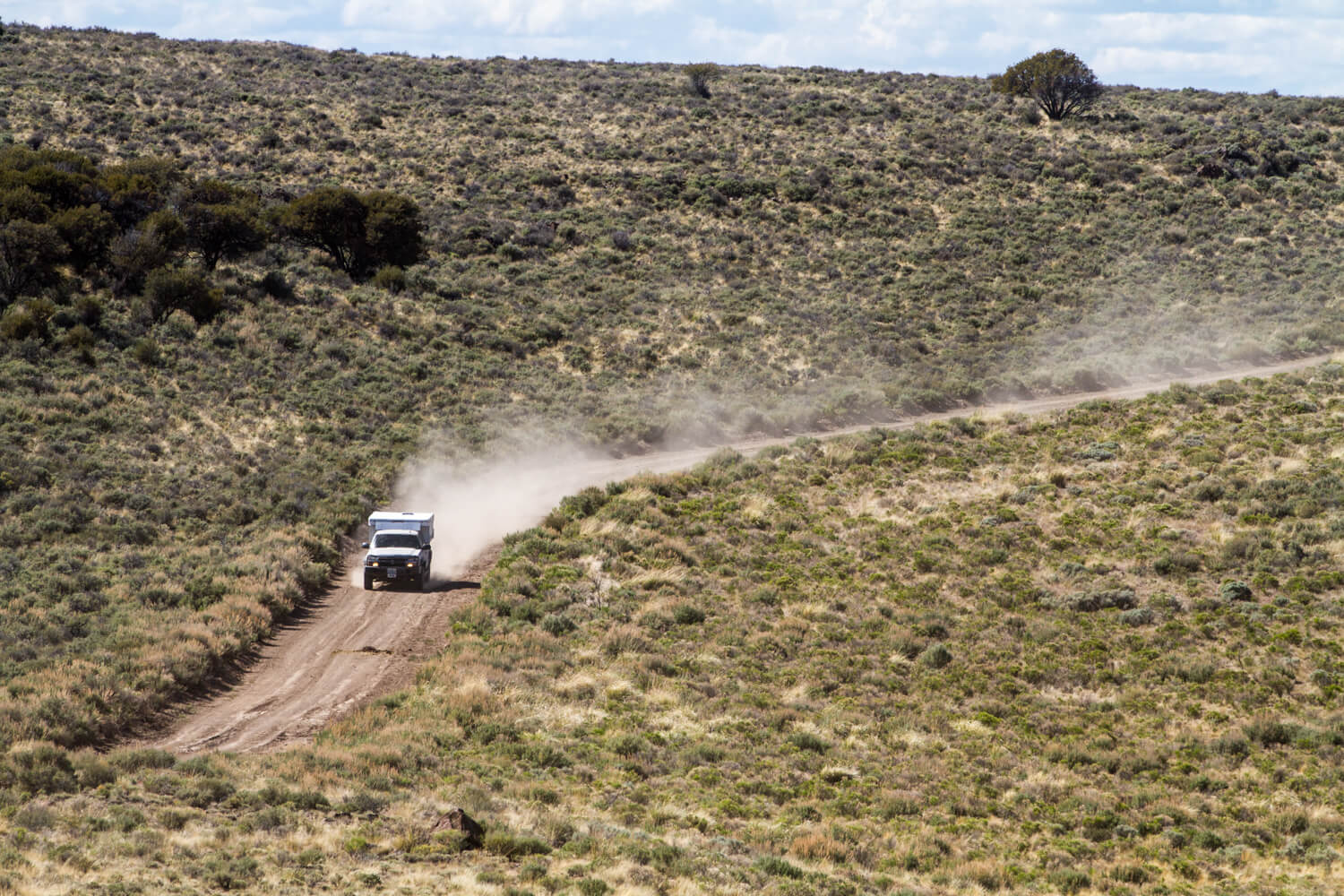
Photography by Harry Wagner
Figuring out what to bring with you on the trail can be a challenge. Pack too light and you might go hungry or be freezing when the sun drops behind the mountains. Pack too heavy though and you run out of space, must dig through everything you brought to find what you are looking for, or overtax your vehicle. Determining what to bring with you depends on a variety of factors including where you are going, who you are going with, what time of year you are going, and how long you are going for. For instance, you might carry spare axle shafts with you if you plan to run Pritchett Canyon in Moab, but they aren’t likely needed for an overland trip on Gemini Bridges. Similarly, going to the Rubicon in the winter would require you to bring very different clothing than going in the middle of summer. The information below is not meant to be all inclusive, but rather is a starting point of things to consider when taking into account the above factors.
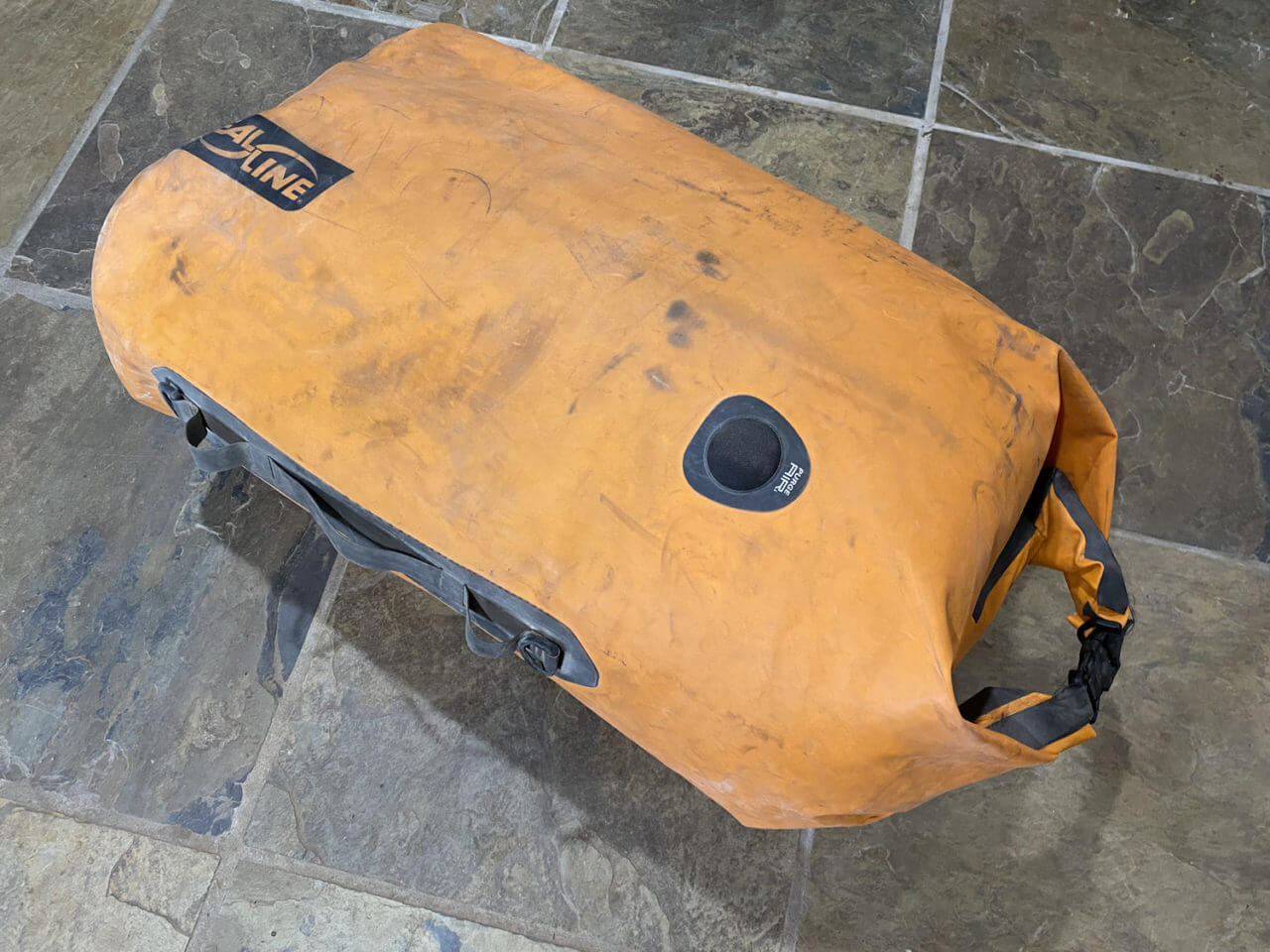
We like to store all our camping gear in a dry bag. Not only does it keep the gear dry, but it also keeps your tent and sleeping bag free from dust on the trail. If you have a roof top tent you can typically store your sleeping bags and bedding inside when it is closed.
Camping Gear
Bring enough gear to ensure that you are comfortable at night. For some, that means a full size pillow from home and a sleeping bag that is big enough to move around in. Others are fine using their jacket for a pillow and a mummy bag to sleep in. Some items to consider bringing in your camp gear include:
- Sleeping bag
- Sleeping pad
- Pillow
- Quick dry towel
- Tent (if not using a roof top tent)
- Sleeping bag liner (can also be useful in the winter if your bag is not particularly warm)
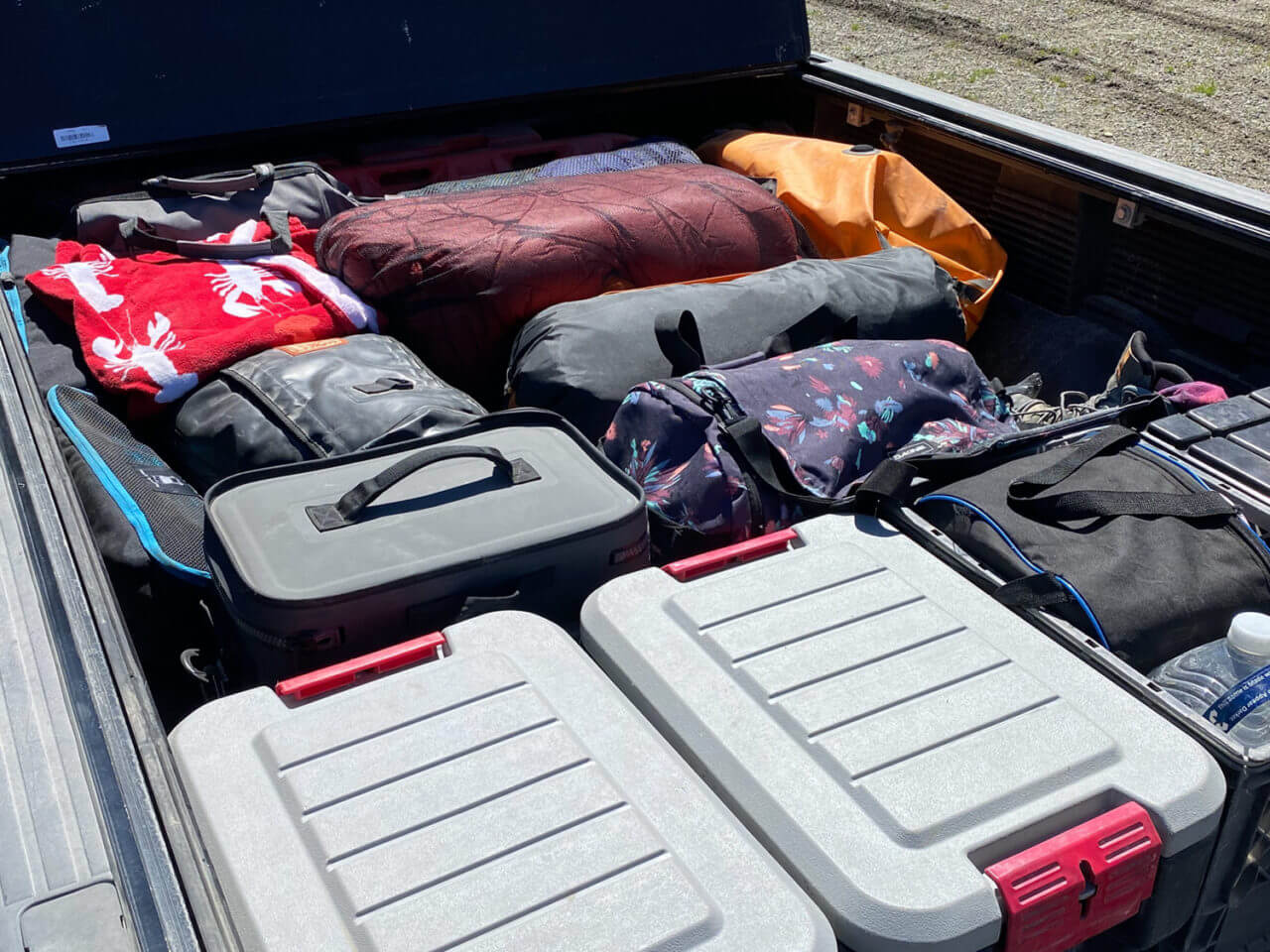
We typically pack all of our clothing and toiletries in a rubberized duffel such as those available from The North Face or Rockagator. Inside we keep a smaller bag that we put dirty clothes in to keep them separate from our clean clothes.
Clothing and Toiletries
The clothing you bring will be largely dependent on where you are going and the time of year you are going. We always bring plenty of underwear and more socks than we think we will need, they don’t take up much space. In the summer, in addition to shorts and t-shirts, we bring sandals and a swimsuit and a towel to cool off when we are near the water. In the winter, in addition to pants and sweatshirts, we like to bring long underwear to sleep in and a beanie. The wetter it may be, the less cotton clothes we bring. Cotton is not a good insulator when it gets wet and can cause blisters if you have wet cotton socks on.
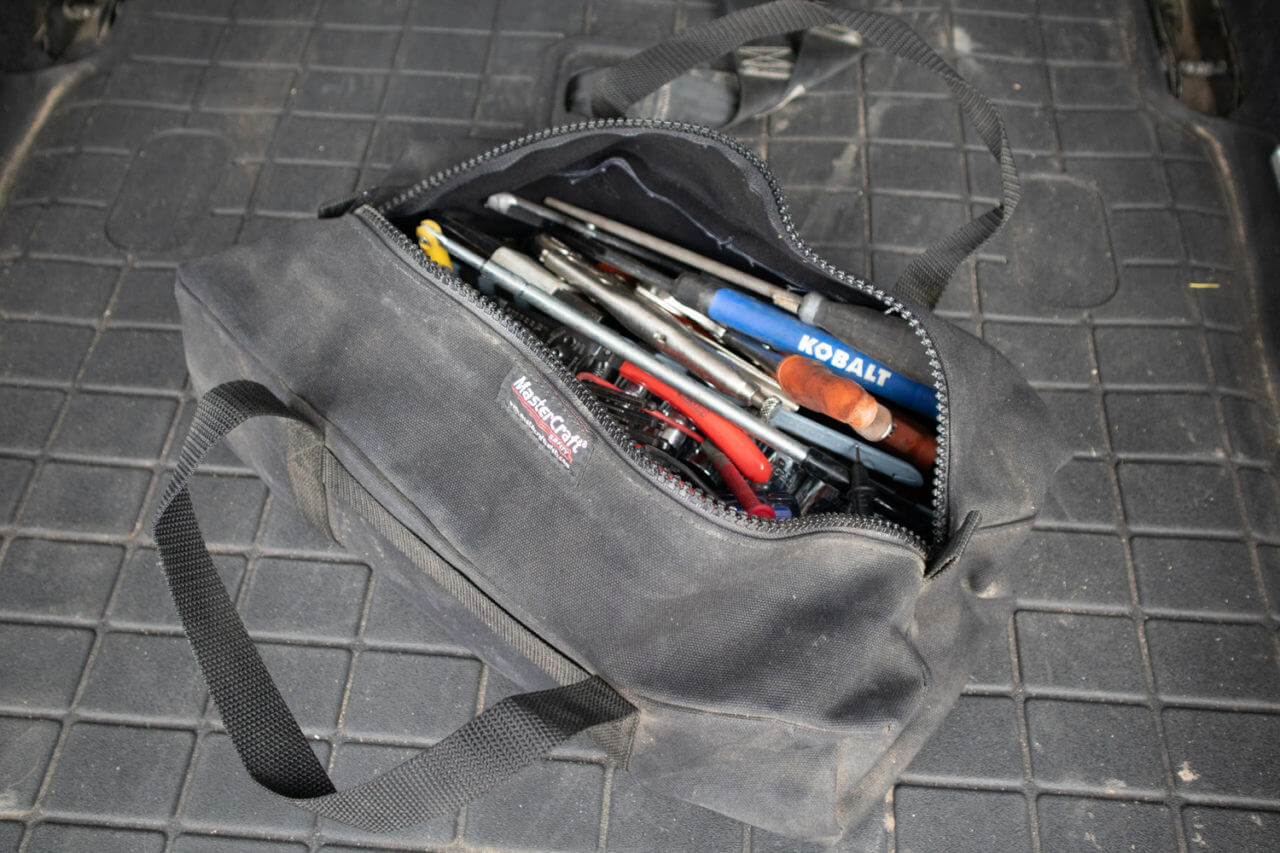
MasterCraft Safety makes a variety of different tool bags that have thoughtful features like loops on the side so you can strap them down in your vehicle to keep them from moving around. These sturdy canvas bags keep your tools from rattling on the trail as well.
Tools
While the specific tools we carry varies from vehicle to vehicle, depending on things like whether it uses SAE or metric fasteners. This is a general guide of what we carry with us on the trail based on years of experience in the backcountry. While opinions vary, we prefer to carry inexpensive tools on the trail and keep our high-quality tools at home in our rolling cabinet. That way if we need to loan out a tool that we don’t get back, or even sacrifice a wrench to weld parts back together (it has happened!) it isn’t a big financial hit.
- 1/4, 3/8, and 1/2-inch drive ratchets
- Various extensions for ratchets (preferably with wobble ends)
- Deep and shallow sockets
- Crescent wrench
- Vise grips
- Flat head and Phillips screwdrivers
- Multimeter
- Wire strippers
- OBD code reader
- Three-pound sledge
- Drift
- Chisel
- Pry bar
- Allen wrenches
- Torx bits (if your vehicle uses Torx
- Needle nose pliers
- Snap ring pliers
- Dykes
- Channel locks
- File
- Magnet
- Specialty sockets (such as for a unit bearing or hub)
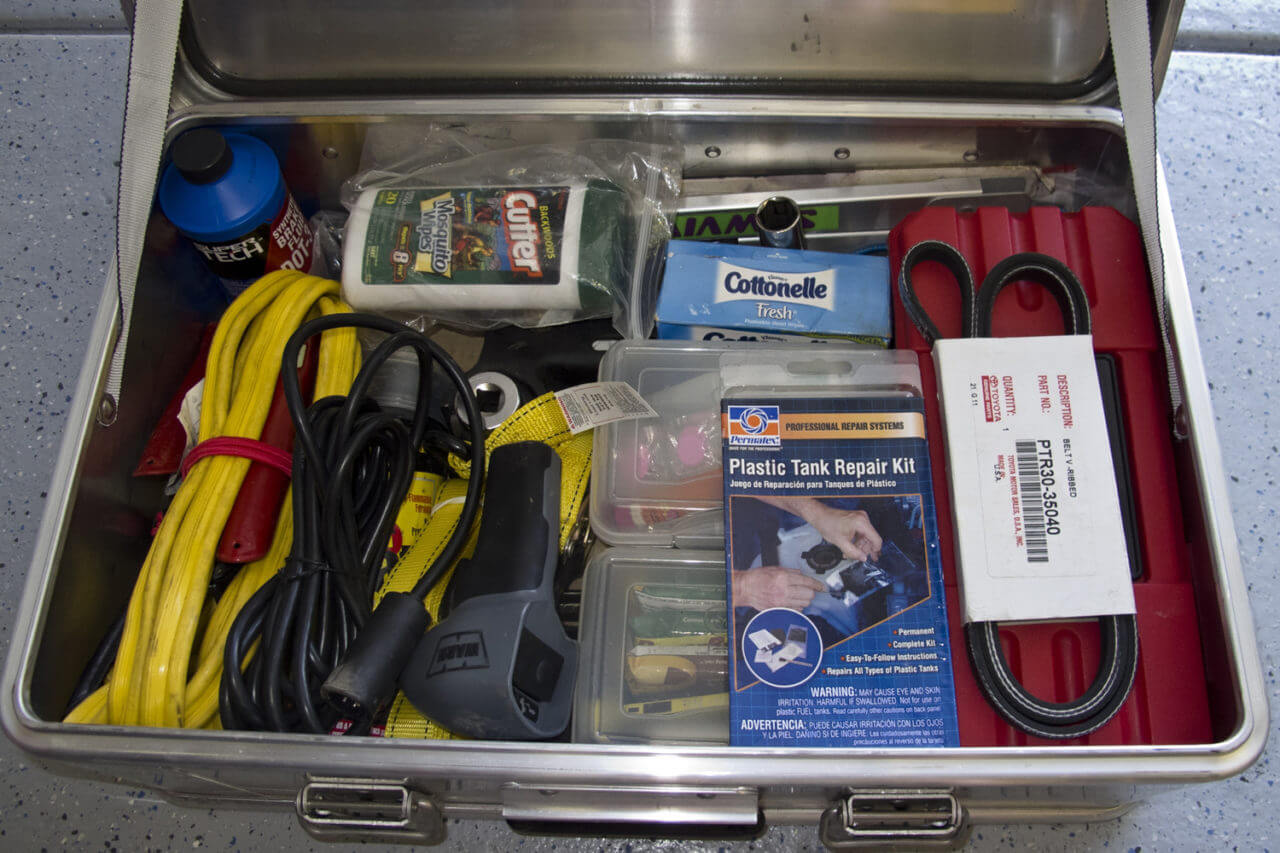
Hopefully you will not need spare parts on your trip. As a result, we typically store them on the bottom of all our gear. Parts are often heavy too so putting them down lower will keep your center of gravity lower and help prevent the parts from flying around in the event of a rollover.
Spare Parts
When it comes to spare parts, less can be more. The goal is to limp home, not perform a complete rebuild on the trail. Do you really need an entire set of axle shafts if you know that the u-joint is the weak link? And if you are carrying spare u-joints, do you have the tools to change them out? We typically bring things like duct tape, bailing wire, electrical tape, and epoxy in order to bandage our rig back together on the trail. Yes, we have broken ring and pinions before, but we didn’t start carrying spare differentials. Instead, we removed the driveline and had a friend tow us back to civilization, that is the goal. If your vehicle has a known weak link though, like for instance the tie rod ends on Chevy pickups, spares are a good idea.

We carry a bag in our Jeep with a Bubba Rope kinetic strap and d-ring and soft shackles. On the rear of the vehicle, we use a pin through the receiver hitch to pull from, and in the front we have tow hooks. This gets us out of most situations so we keep the bag where it is easily accessible at all times.
Recovery Gear
Winches are great for self-recovery, particularly if you are rock crawling where the slow control of a winch is critical to getting unstuck without causing more damage. There are plenty of related recovery products that are just as useful though on the trail. These include:
- Kinetic strap
- Hi-Lift jack
- D-ring shackles
- Shovel
- TRED traction boards
- Heavy leather gloves
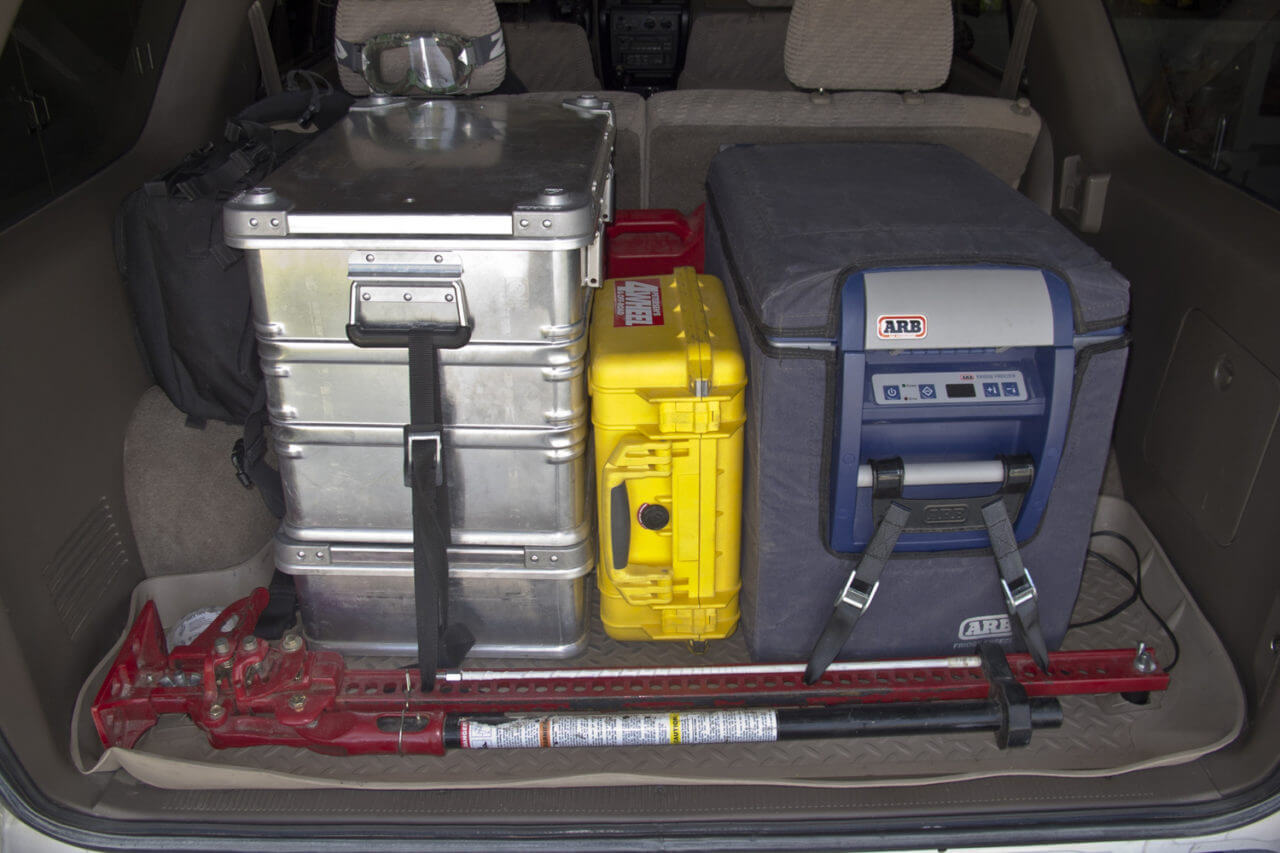
Freezer/fridges are expensive, but if you spend a lot of time on the trail they are totally worth it. You never have to worry about buying ice or having soggy sandwiches. This ARB Freezer/Fridge can be charged by 12V or 110V, has a low voltage shut-off so it won’t kill your vehicle’s battery, and can be set from -8F to 50F.
Food and Cooking
Food is important to fuel your adventures, but it can vary from a loaf of bread and some peanut butter to filet mignon and roasted root vegetables. Typically the more time we have in camp, the more elaborate our meals are. If we are on the trail all day long, a freeze dried meal that only requires hot water or a piece of pizza will normally suffice. We have a box that we keep a stove, cutting board, cups, utensils, paper plates, seasoning, biodegradable dish soap and a sponge, and pots and pans in. Another box contains dry food, the box keeps it from getting smashed like a shopping bag might allow. Cold food goes into a fridge or ice chest, we typically bring coffee and easy breakfast food like yogurt or oatmeal. Big meals like bacon and eggs and potatoes are delicious, but plan extra time not only to prepare them but for cleanup as well.
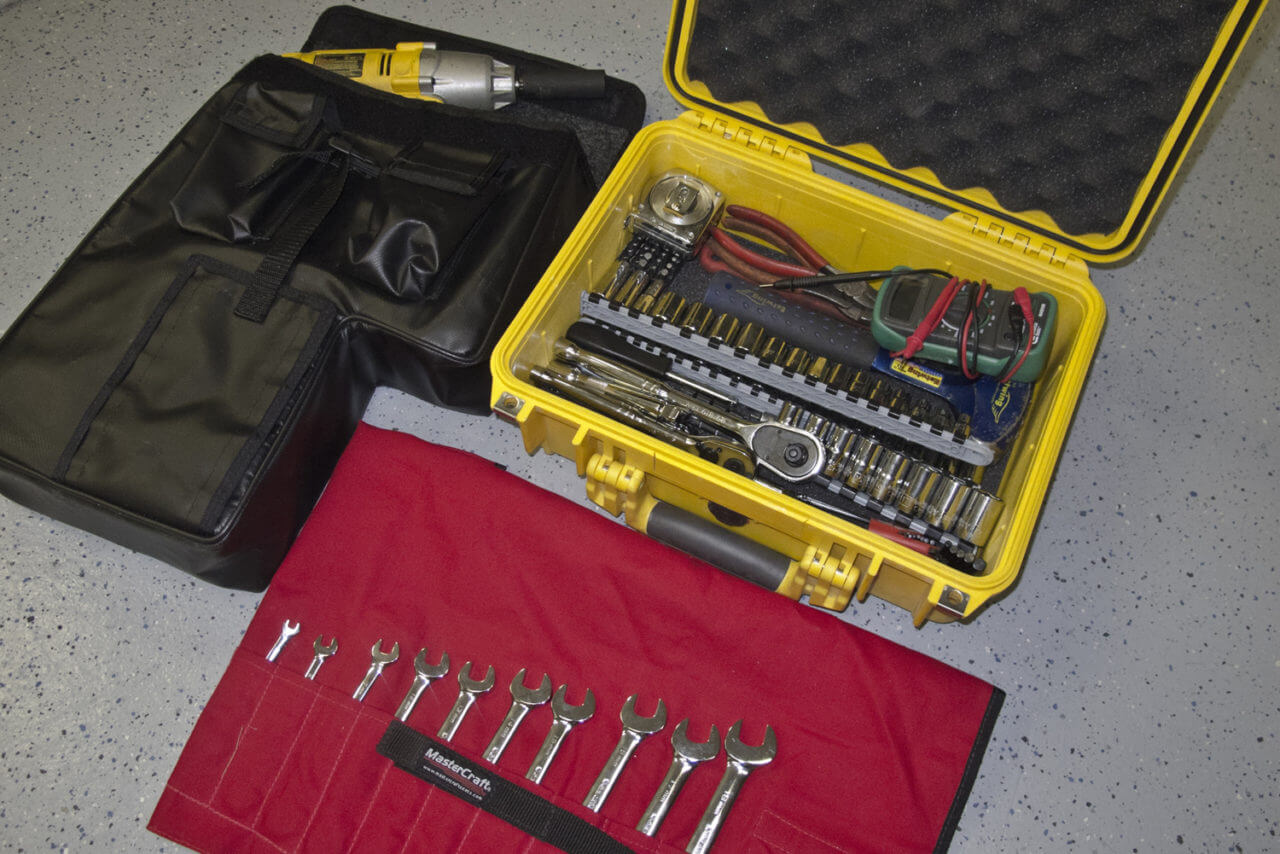
Your gear can be packed into soft cases like Rightline duffel bags and Mastercraft Safety tool bags or hard boxes like Action Packers and Pelican cases. In pickup beds, we prefer hard cases that we can stack and lock; they also tend to be better at keeping out dust and dirt. Inside an enclosed SUV we typically prefer soft bags that conform better and are less likely to scratch up your interior. A combination of bags for different situations is useful and also allows you to store your gear when it is not in use.












2